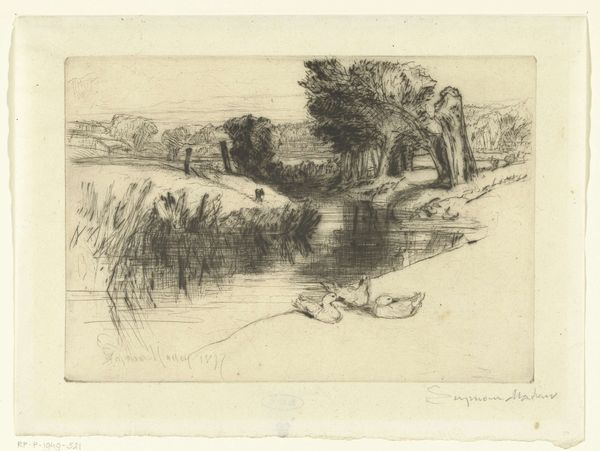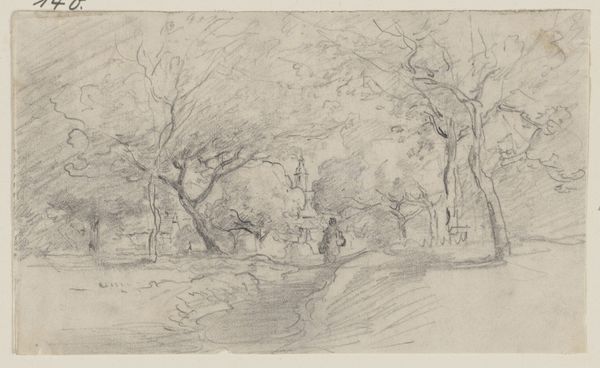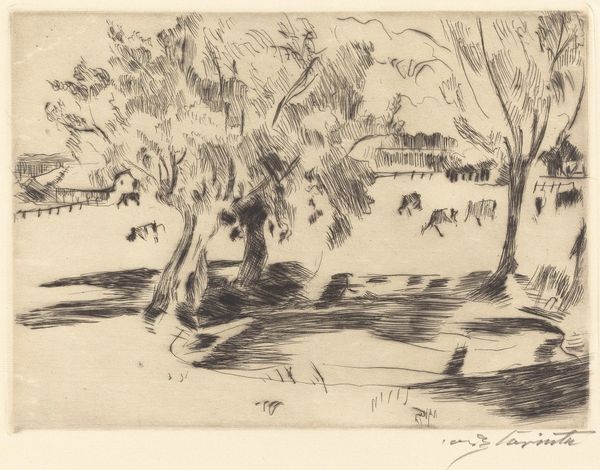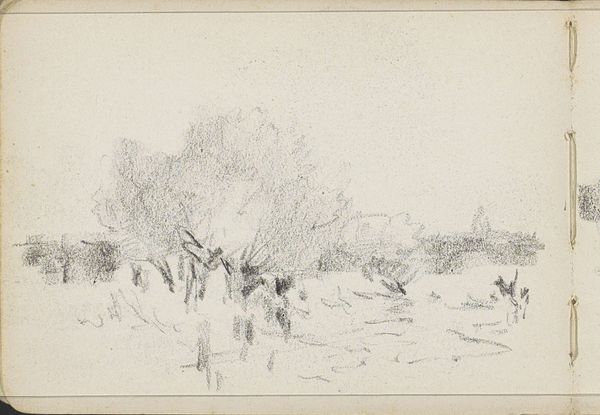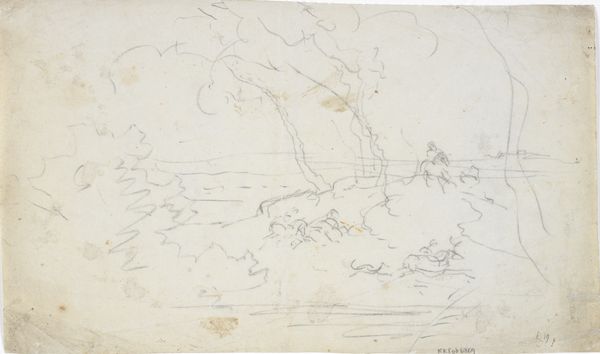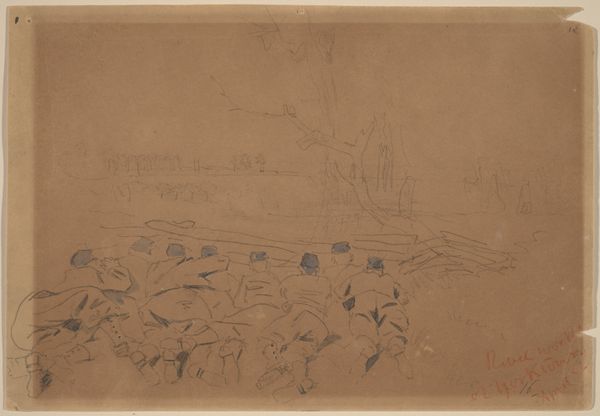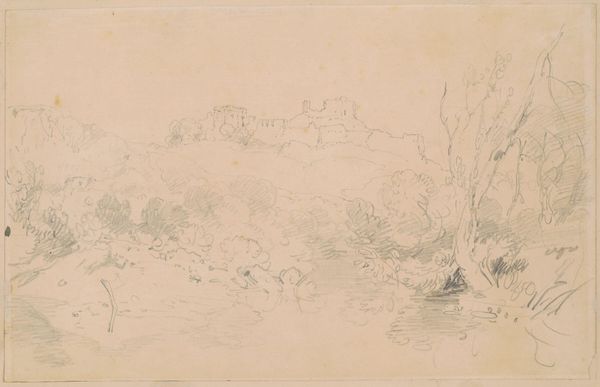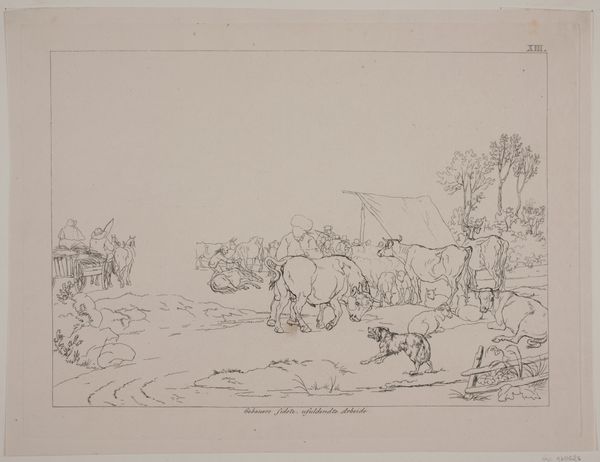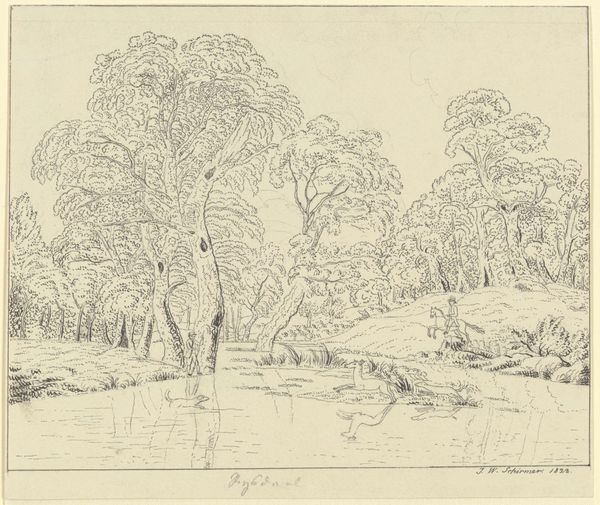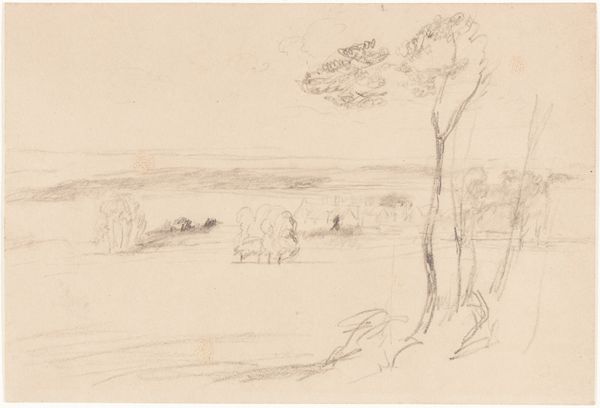
Dimensions: 12 1/8 x 18 1/4 in. (30.8 x 46.36 cm) (image)15 1/4 x 19 3/4 in. (38.74 x 50.17 cm) (sheet)
Copyright: No Copyright - United States
Curator: Looking at "The Arc de Triomphe," a color lithograph created by Pierre Bonnard between 1897 and 1899, it evokes such a fleeting sense of place. The print is part of the collection here at the Minneapolis Institute of Art. Editor: My first impression is almost dreamlike. The colors are muted, the figures are barely there. It’s like a memory trying to surface, just beyond reach. Is it meant to celebrate French triumph or critique something deeper in French society? Curator: Bonnard, associated with the Post-Impressionist group Les Nabis, often explored themes of intimacy and daily life, although here, it seems to hint at grander urban themes. But there are always the symbolic traces to observe - note how the arch, an emblem of military victory, is softened, almost obscured by the swirling lines of the trees and bustling crowds? Editor: I’m immediately drawn to how the aquamarine blue punches through the composition in two strategic points: the line under the riders, and then again under the trees. Are they carriages or boats reflected in the water? They disrupt the implied narrative with contemporary notes of capital, power, and luxury in contrast with the old imperial history literally embodied in the Arc de Triomphe. I read the blue as a comment on the modernization of Paris, on labor exploitation, perhaps. Curator: Possibly. Bonnard’s skill with lithography allowed him to capture these subtle nuances in color and tone, conveying the energy of modern Paris. This is not about the literal representation of a landmark. It’s more the artist representing the impression that the Arch leaves, the weight that monument projects on the passersby. You can compare that sensation with what Freud defined as the "unheimlich" or uncanny. Editor: So the Arc here almost operates as a spectral presence, a historical echo in a rapidly changing society? Curator: Precisely. The arch’s symbolic function—its representation of power, tradition—is still there, yet the piece deconstructs the monument. Bonnard doesn't emphasize its grandeur. Editor: It makes you think about what we choose to commemorate and how those choices shape collective memory, how selective we are in mythmaking... Thanks, this conversation was much needed in this time when there is a lot of monuments crumbling and collective reviewing is happening at social speed. Curator: Indeed. This image and our shared discussion hopefully provided another insight.
Comments
No comments
Be the first to comment and join the conversation on the ultimate creative platform.
